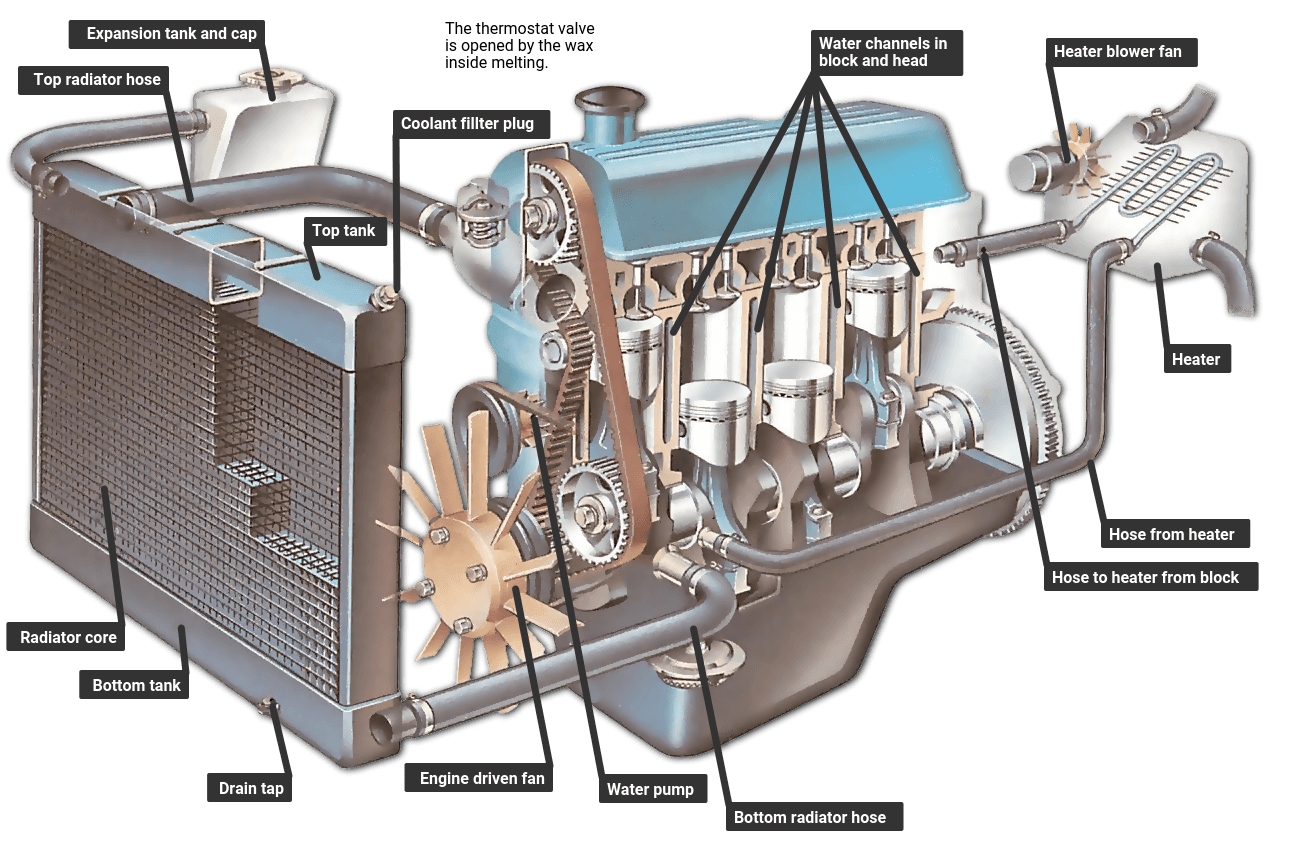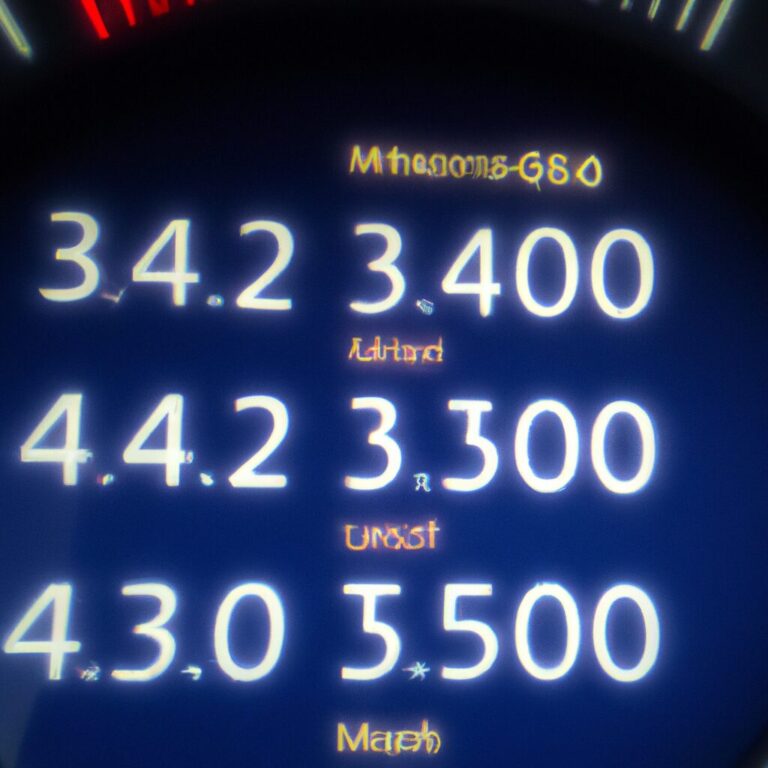How Long Does It Take Antifreeze to Circulate
Antifreeze typically circulates within a few minutes to reach optimal temperature throughout the engine. This process may vary based on the vehicle type and engine size.
Ensuring proper circulation of antifreeze is crucial for maintaining the engine’s temperature and preventing overheating. By understanding how long antifreeze takes to circulate, vehicle owners can effectively monitor their engine’s cooling system and prevent potential issues. Regular maintenance, including checking antifreeze levels and changing it as recommended, is essential to ensure the optimal performance of the cooling system.
Proper circulation of antifreeze helps dissipate heat efficiently and keeps the engine running smoothly. Now let’s delve deeper into the importance of antifreeze circulation in vehicle maintenance.
What Is Antifreeze?
What is Antifreeze?
Antifreeze is a vital fluid used in automobile engines to maintain the proper operating temperature. It consists of a mixture of ethylene glycol, propylene glycol, or other chemicals that help prevent the engine from freezing in cold temperatures and overheating in hot conditions.
Composition Of Antifreeze
Antifreeze is typically composed of a mixture of ethylene glycol, propylene glycol, and additives. These additives may include rust and corrosion inhibitors, as well as water pump lubricants to protect the engine.
Importance Of Antifreeze
Antifreeze is essential for maintaining the engine’s optimal temperature and preventing freezing or overheating. It helps to protect the engine from damage, ensures efficient heat transfer, and prolongs the lifespan of various engine components.

Credit: www.howacarworks.com
The Circulation Process
Antifreeze takes varying amounts of time to circulate through a vehicle’s cooling system, depending on factors such as engine temperature and efficiency. Patience is key as this process can take anywhere from a few minutes to half an hour, ensuring optimal engine performance and temperature regulation.
Coolant Pump
The coolant pump pushes antifreeze through the engine cooling system.Coolant Flow
1. Antifreeze flows from the radiator into the engine block. 2. It absorbs heat from the engine components. 3. The heated antifreeze then travels back to the radiator to dissipate heat. Antifreeze travels through the cooling system continuously during engine operation.Factors Affecting Circulation Time
Factors affecting circulation time are crucial in understanding how long it takes for antifreeze to circulate properly within a vehicle’s cooling system. Several key elements influence the speed at which antifreeze moves through the system, ensuring efficient cooling of the engine.
Engine Design
Engine design plays a significant role in determining the circulation time of antifreeze. The architecture and layout of the engine dictate how quickly the coolant can flow through the system.
Ambient Temperature
The ambient temperature in which the vehicle operates affects the circulation time of antifreeze. Cold temperatures can cause the coolant to take longer to reach optimal operating temperature, impacting circulation speed.
Cooling System Condition
The overall condition of the cooling system also influences how quickly antifreeze circulates. Leaks, clogs, or malfunctions can impede the flow of coolant, leading to longer circulation times and potential overheating issues.
Credit: www.quora.com
How Long Does It Typically Take?
Antifreeze circulation time can vary depending on several factors such as the type of vehicle, engine size, and operating conditions. Understanding the typical circulation time of antifreeze can help in assessing potential issues and ensuring proper cooling system functionality. We will delve into the average circulation time and the variances that can affect this process.
Average Circulation Time
On average, it takes approximately 10 to 15 minutes for antifreeze to circulate through the cooling system of a vehicle. This duration can be influenced by the design of the engine, the efficiency of the water pump, and the ambient temperature. The optimal circulation time indicates that the antifreeze is effectively dissipating heat and maintaining the engine’s temperature within the recommended range.
Variances In Circulation Time
Several factors can result in variances in the circulation time of antifreeze. These include the coolant level, the condition of the radiator and hoses, as well as any potential blockages in the cooling system. Additionally, extreme weather conditions can impact the time it takes for antifreeze to circulate effectively. By being aware of these variances, vehicle owners can proactively address any issues that may impede the proper circulation of antifreeze to avoid potential overheating and engine damage.
Signs Of Poor Circulation
Antifreeze can take about 10 to 20 minutes to circulate fully. Signs of poor circulation can include cold extremities, numbness or tingling in the limbs, and muscle cramps. It is important to address poor circulation as it can lead to serious health issues if left untreated.
When it comes to the performance of your vehicle’s cooling system, proper antifreeze circulation is essential. Poor circulation can lead to various issues, resulting in potential damage to the engine and increased chances of overheating. To ensure that your cooling system is functioning optimally, it’s important to be aware of the signs that indicate poor circulation. This will allow you to take timely action and prevent further complications. Let’s take a closer look at some of the key signs you should watch for:Overheating
Overheating is a clear indicator that your antifreeze isn’t circulating properly. When the coolant does not flow as it should, the engine temperature rises, causing the system to overheat. This can occur for several reasons, such as a faulty water pump or a blocked radiator. Recognizing the signs of overheating, such as steam coming from the engine or a rising temperature gauge, is crucial. Ignoring these warning signs can result in serious engine damage.Inconsistent Temperature
Another sign of poor antifreeze circulation is an inconsistent temperature gauge reading. When the cooling system is functioning correctly, the temperature gauge should remain relatively stable within the normal range. However, if you notice frequent fluctuations in the temperature gauge, it indicates that the antifreeze is not circulating properly. This inconsistency can be caused by various factors, including air pockets in the system or a malfunctioning thermostat. It is important to address this issue promptly to prevent overheating and potential engine damage.Coolant Leaks
Coolant leaks are a clear indication of poor antifreeze circulation. If the antifreeze is not flowing as it should, it can result in pressure buildup within the cooling system. This increased pressure can cause leaks to develop in various areas, such as hoses or the radiator. If you notice any puddles of coolant beneath your vehicle or find yourself constantly replenishing the coolant level, it’s essential to have the system inspected for leaks. Ignoring coolant leaks can lead to a loss of coolant, which in turn can cause the engine to overheat. In conclusion, understanding the signs of poor antifreeze circulation is crucial for maintaining the health of your vehicle’s cooling system. By paying attention to overheating, inconsistent temperature readings, and coolant leaks, you can address any issues promptly and prevent further complications. Regular maintenance and timely repairs will ensure your antifreeze continues to circulate effectively, keeping your engine cool and protected.
Credit: www.walmart.com
Frequently Asked Questions Of How Long Does It Take Antifreeze To Circulate
How Fast Should Coolant Flow Through Radiator?
Coolant should flow through radiator at a rate of around 1 gallon per minute for optimal engine cooling.
How Quickly Does Antifreeze Work?
Antifreeze typically works within minutes of being added to a vehicle’s engine cooling system.
Does Engine Coolant Work Immediately?
Engine coolant may take some time to reach optimal temperature, but it begins working immediately upon circulation. Coolant helps regulate engine temperature to prevent overheating. Regular maintenance ensures it performs effectively.
How Can I Tell If My Coolant Is Circulating?
To determine if your coolant is circulating, feel the hoses connected to the radiator or heater core. If they are hot, this indicates that the coolant is flowing. Additionally, you can check the temperature gauge on your dashboard; if it’s in the normal range, it suggests that the coolant is circulating properly.
How Long Does It Take For Antifreeze To Circulate In A Car?
Antifreeze typically takes about 10-20 minutes to circulate throughout the entire cooling system of a car.
What Factors Can Affect The Time It Takes For Antifreeze To Circulate?
The size of the cooling system, engine temperature, and the type of coolant can affect the time it takes for antifreeze to circulate.
Why Is It Important For Antifreeze To Circulate Properly?
Proper circulation ensures that the coolant can effectively absorb and dissipate heat, preventing the engine from overheating and potentially causing damage.
Conclusion
The time taken for antifreeze to circulate is influenced by various factors. Understanding the process and ensuring proper maintenance of your vehicle’s cooling system is crucial for optimal performance. By staying informed and keeping up with regular maintenance, you can ensure efficient circulation of antifreeze and prevent potential issues with your vehicle’s engine.

